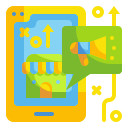Getting Started: Boards, LEDs, and Confidence
Start with an Arduino Uno or Nano, a handful of 5 mm LEDs, 220–1 kΩ resistors, a breadboard, and jumper wires. Keep it simple, affordable, and inviting. Curiosity grows when your first build works. Tell us which kit you choose.
Getting Started: Boards, LEDs, and Confidence
Stick with USB power while learning. Always use a current-limiting resistor, double-check LED polarity, and avoid loose wires that can short. Small safety habits build huge confidence. Ask questions anytime, and share your safety checklist with new readers.





